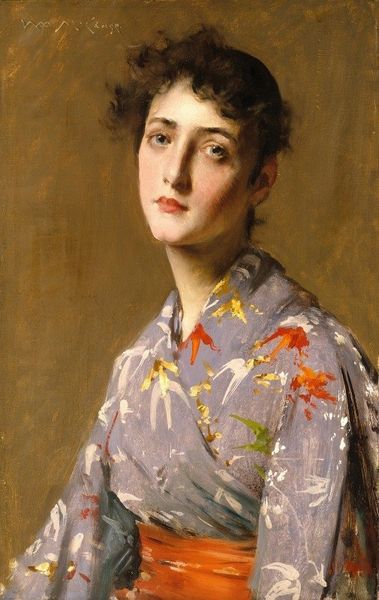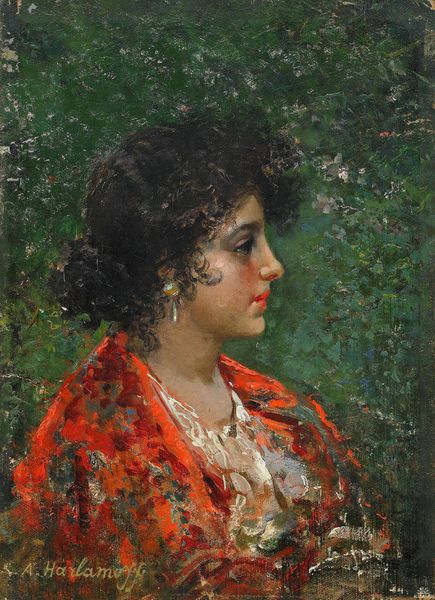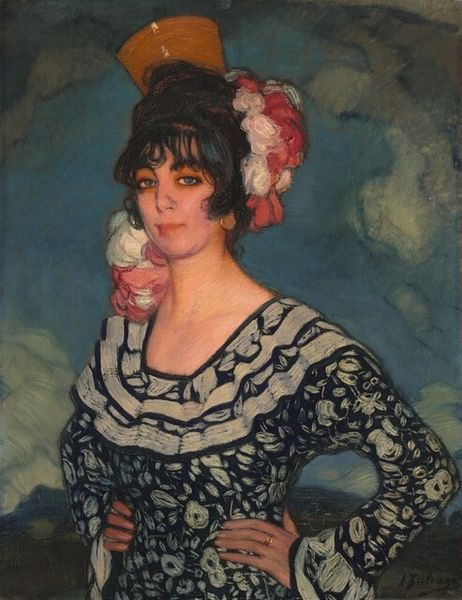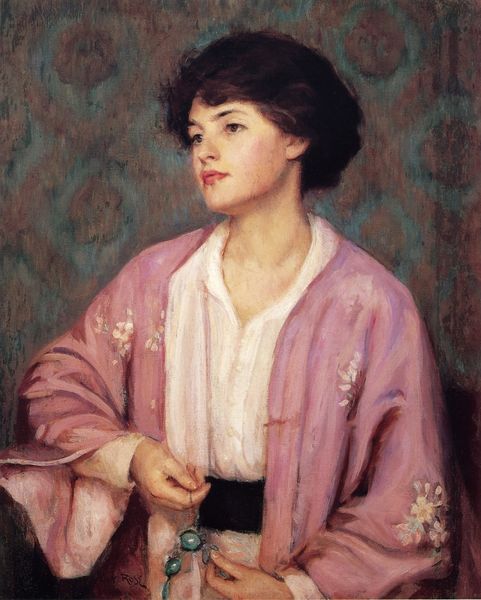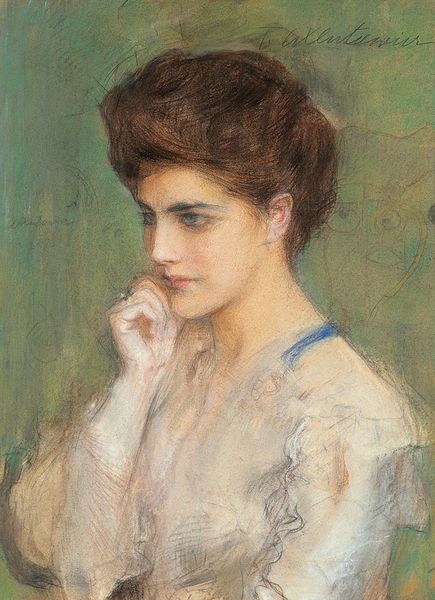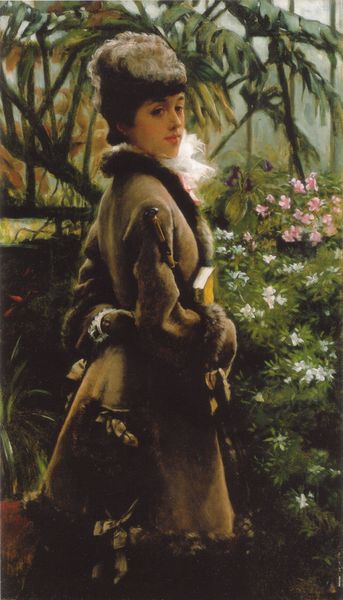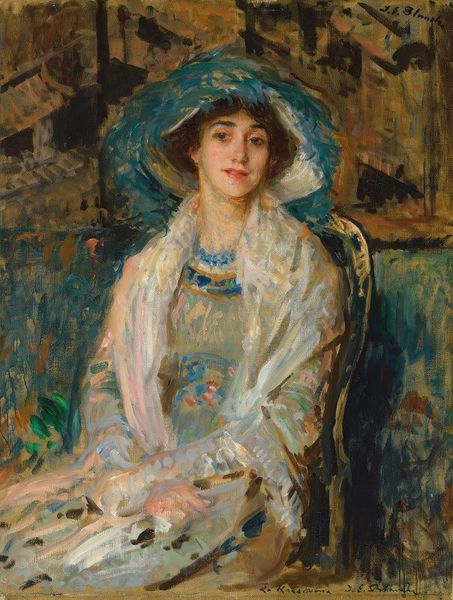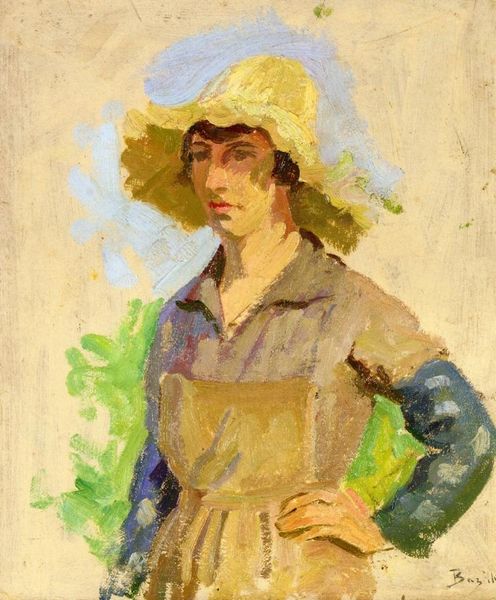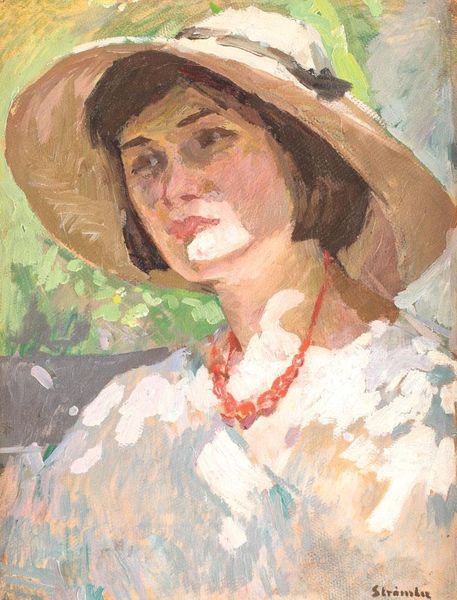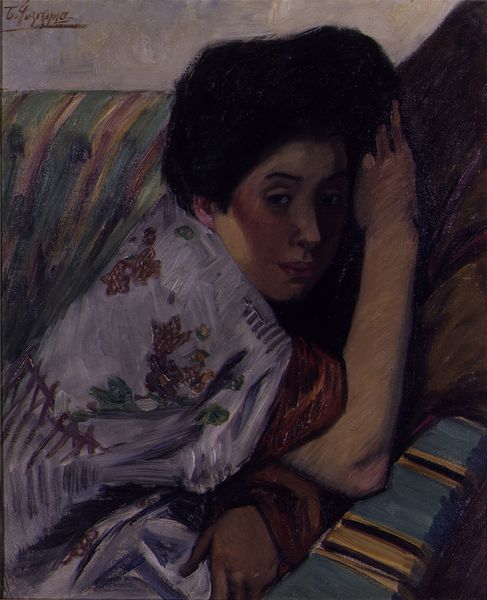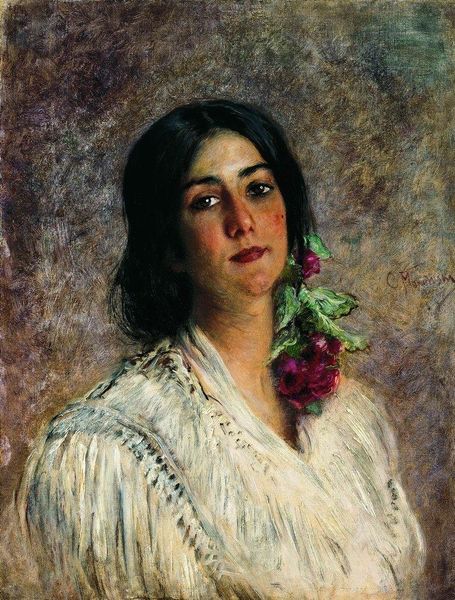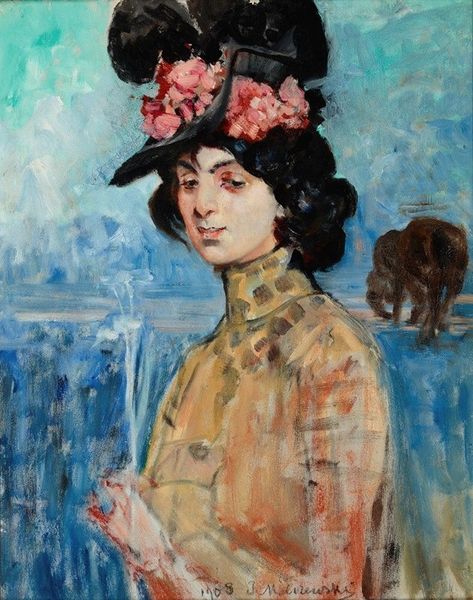
Copyright: Public domain
Curator: We are looking at Konstantin Gorbatov's "Portrait of a Young Woman," created around 1925. It looks like the artist used gouache and watercolor on top of an oil painting. It seems a bit experimental with material combinations. What's your initial impression? Artist: Experimental is right! It feels dreamlike. Her gaze, so direct, clashes a little with the hazy background, that's probably gouache and watercolor as you noted. It gives this feeling like a memory trying to sharpen itself, failing somewhat in its desire. I sense a quiet story. Curator: The layering is interesting. You have a definite landscape influence on the background coupled with a very precise rendering of the figure. The striped skirt—is that part of how you build your impressions too? It's striking because of the fabric patterns juxtaposed in one visual field. Artist: Oh, definitely! The skirt's bold stripes juxtapose beautifully with the floral shawl—I immediately imagine someone very thoughtful choosing and combining those fabrics for her image. The textiles are so visually compelling that the actual human form fades a bit back, or is more closely wed to those objects surrounding her presence. What were textiles like at the time, or do you feel like these are merely part of the artistic language for such art? Curator: Mass production of patterned fabrics really accelerated in the early 20th century, affecting both fashion and domestic environments. Gorbatov's work probably draws upon a context in which these choices—stripes and floral designs and how people use them in everyday life—would be increasingly available, and more visible than ever. This wasn't just about representing fabrics but referencing their evolving place in society. Artist: Right, right. So, it is interesting how available items become tools for image creation as a reflection of identity or social meaning. Almost as if we all can be walking or existing forms of self-expression, through the labor that produces each element to make this reality come to life. Thank you for bringing this labor into a discussion on art as I am interested in this kind of material. Curator: Indeed. It shows us how portraiture moved past the simple likeness to engaging with social trends around manufacturing and cultural preferences of that day. That is a valuable understanding that I gleam as I come closer to it as well! Artist: Exactly. What begins as the artist's view slowly dissolves back into the culture around us again.
Comments
No comments
Be the first to comment and join the conversation on the ultimate creative platform.

